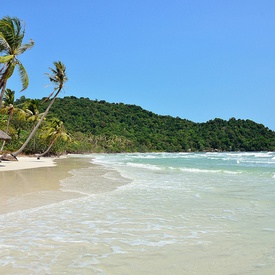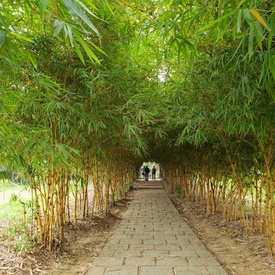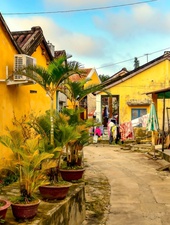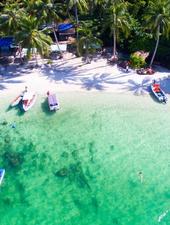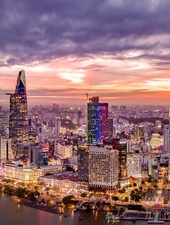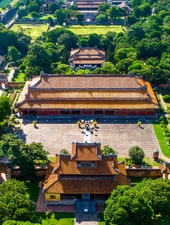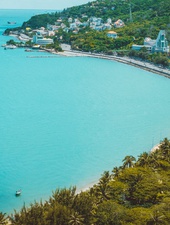Halong Bay
Land Of The Descending Dragon
Designated by UNESCO as a World Heritage Site, Halong Bay remains one of Vietnam's premier destinations for both domestic and international travelers, combining stunning natural beauty with a vibrant urban atmosphere.
Halong Bay consists of a complex network of limestone islands situated within the Gulf of Tonkin, in the city of Ha Long, Quang Ninh province, approximately 170 km from Hanoi. It is bordered to the northeast by Bai Tu Long Bay and to the south and east by the Cat Ba Archipelago and Lan Ha Bay. To plan your visit effectively, refer to this updated guide for essential information for your upcoming journey to "the land of the descending dragon."

Weather & Best Time To Visit
Halong Bay shares the tropical climate characteristic of northern Vietnam, with high temperatures from late June to September, often accompanied by storms and typhoons. The winter months can also bring a strong monsoon, resulting in high humidity and rainfall that diminishes sunlight and visibility over the bay. Therefore, it is advisable to avoid planning your trip during these times.
During December and January, Halong Bay attracts numerous foreign visitors due to the Christmas and New Year holidays, benefiting from mild weather conditions. In addition to swimming, tourists can engage in various activities and embark on short excursions to discover the bay's stunning caves.
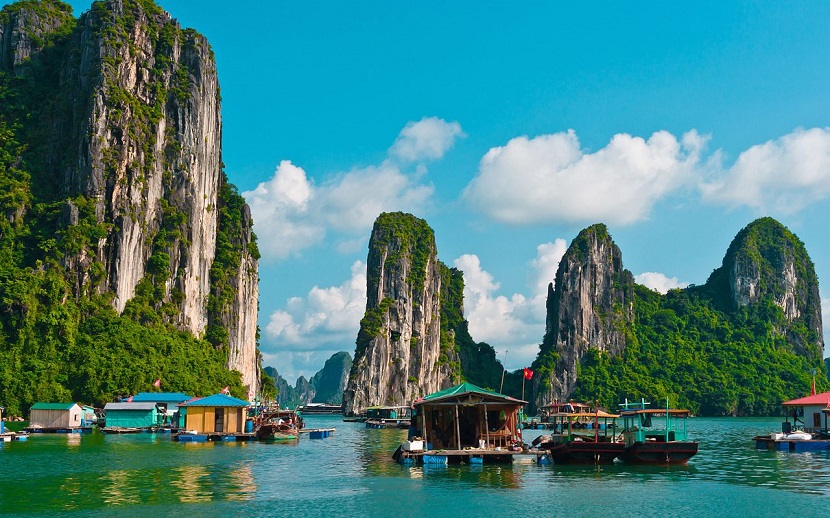
The ideal times to visit Halong Bay are late spring (March and April) and early autumn (October). The late spring climate features gentle sunlight and breezy conditions with an average temperature of around 25°C. This is also the season for flower blooms and local spring festivals, offering a refreshing environment and a chance to experience the vibrant local culture. In autumn, rainfall is minimal, and the waters settle after the stormy summer, making it a popular time for cruise sailing.
Despite the heat during the summer months (May to July), many domestic travelers flock to enjoy the crystal-clear waters and azure skies that showcase picturesque coastal views. Be sure to stay hydrated and avoid outdoor activities during peak sun hours to prevent heat-related issues.
Major Attractions
Sung Sot Cave
 Sung Sot Cave
Sung Sot Cave
Sung Sot Cave, the largest and most stunning cave in Halong Bay, features an intricate system of stalactites and stalagmites in impressive formations, showcasing nature's finest artistry. The route to the cave is through a lush forest and rocky steps, providing an exhilarating experience as you make your way to the top. This remarkable site draws thousands of tourists daily, making it a must-see on any Halong Bay itinerary.
Titov Island
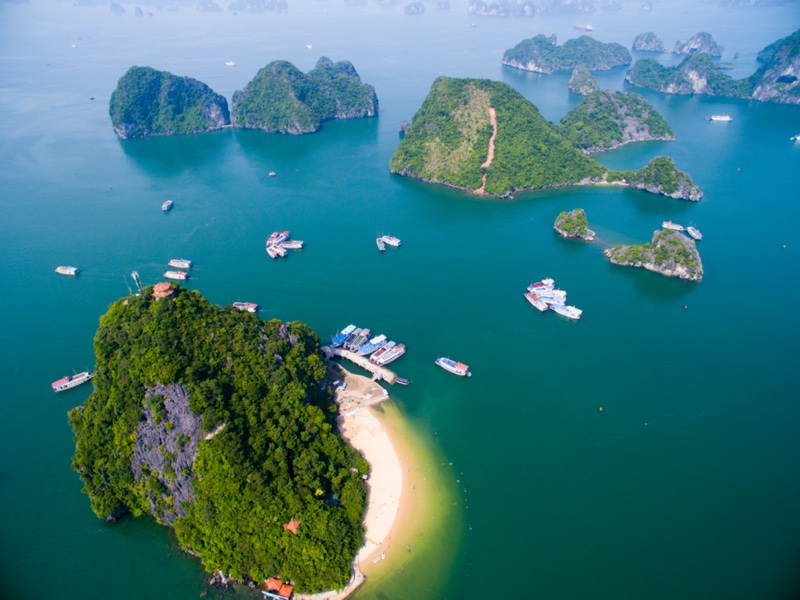 Titov Island
Titov Island
Known for its picturesque landscapes, Titov Island boasts a beautiful crescent-shaped beach on one side and steep mountain slopes on the other. Visitors can relax on the sandy beach or challenge themselves with the climb of over 400 steps to a viewpoint offering a stunning 360° view of the island.
Cua Van Fishing Villages
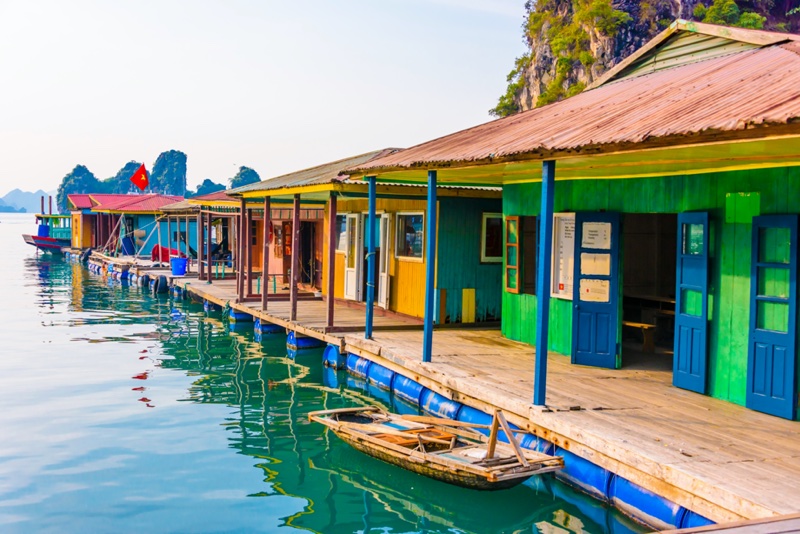 Cua Van Fishing Village
Cua Van Fishing Village
Cua Van Fishing Village has long served as both a home for local fishermen and a favorite tourist destination. Visitors can experience the serene atmosphere created by unique floating houses while gaining insight into the fishing community through activities such as rowing boats, fishing, and visiting floating fish farms.
Tuan Chau Island
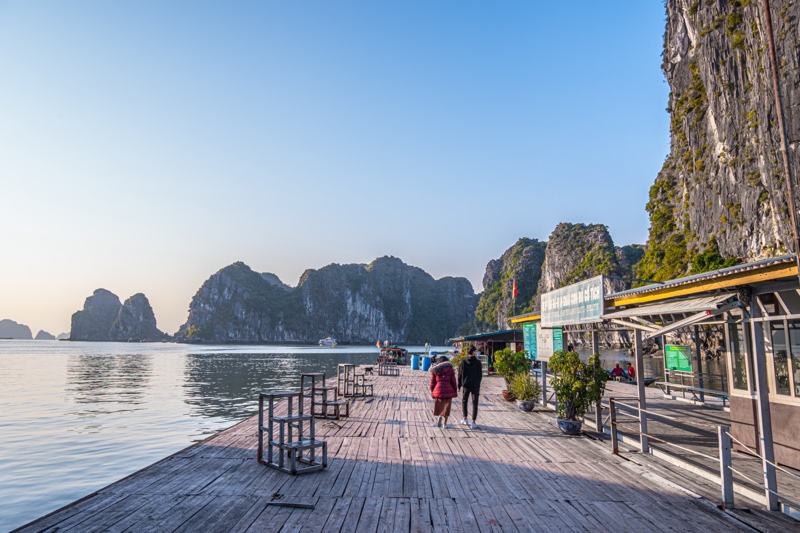 Tuan Chau Island
Tuan Chau Island
Tuan Chau Island is the largest and only inhabited island of the 1,969 islands in Halong Bay. This bustling entertainment hub features a variety of attractions, including water parks and thrilling marine shows featuring dolphins and sea lions. Tuan Chau is conveniently located just 2 km from Halong City center, making it an ideal place for vibrant beach activities.
Where To Stay
As one of Southeast Asia's most favored travel spots, Halong Bay offers an extensive range of accommodations, from budget-friendly homestays to luxurious 5-star hotels, catering to all preferences and budgets.
If you enjoy a lively atmosphere and nightlife, consider staying in Halong City Center or on Cat Ba Island, where you can explore night markets and indulge in a variety of fresh seafood and local delights.
For those seeking peace and the natural beauty of the landscape, consider accommodations situated on the smaller islands within the bay, such as Soi Sim or Quan Lan Island. Unlike the bustling mainland, these islands remain gems with their untouched charm, vibrant greenery, and clear waters. However, luxury lodging options may be limited in these areas as efforts are made to preserve the natural environment.
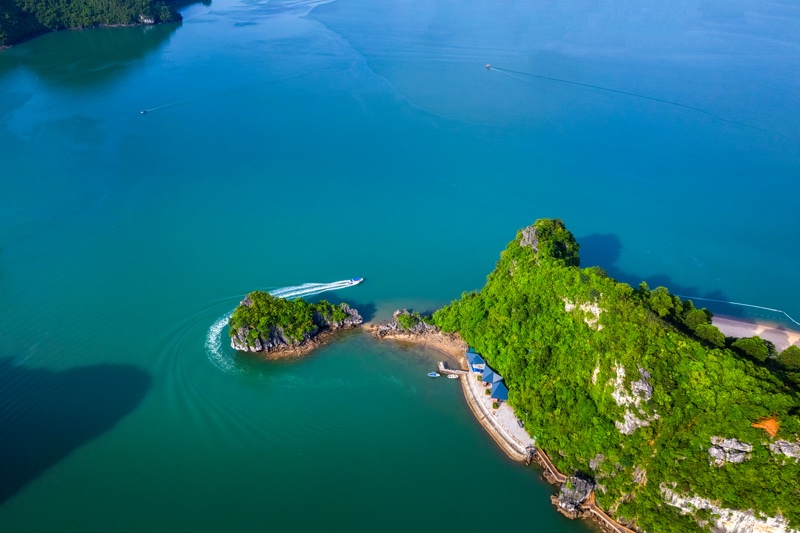 Soi Sim Rock Island
Soi Sim Rock Island
A cruise tour is a top choice for leisure travelers seeking a luxury experience. Spending the majority of your trip at sea allows you to witness breathtaking sunrises and sunsets from the deck while relishing exquisite cuisine and high-quality service. Onboard activities keep guests engaged, ensuring that there is never a dull moment throughout the journey.
How To Get There
Traveling by land is the most common method for reaching Halong Bay from other Northern cities and regions. For those arriving by air from southern Vietnam or overseas, Noi Bai International Airport (Hanoi) and Van Don International Airport (Quang Ninh) are your best options.
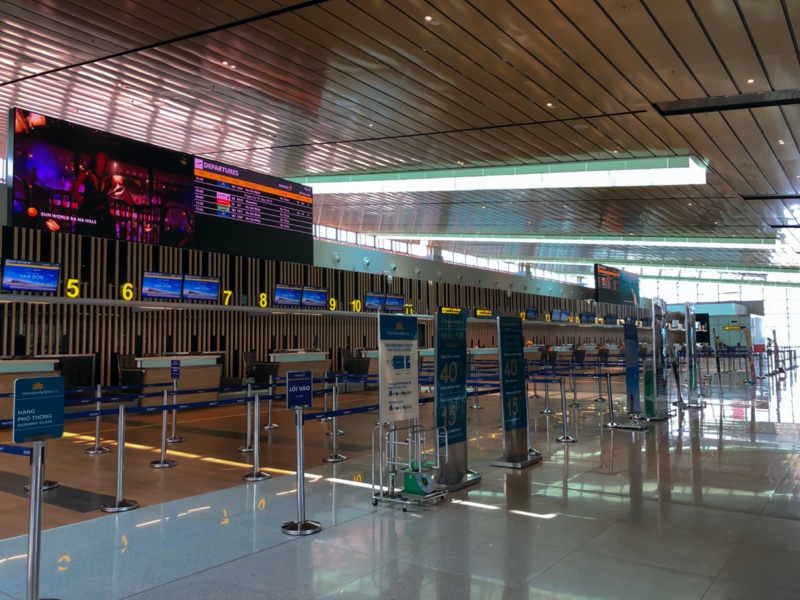 Van Don International Airport
Van Don International Airport
From these airports, you can reach Halong Bay via coach, shuttle bus, or private car in approximately 2.5 hours. Pricing varies based on the service provider and type of vehicle, with coaches typically costing between $5 and $10, while private cars may range from $65 to $100. Reservations can be made through local travel agents, and coach tickets can also be purchased directly at bus stations or online at sites like vexere.com or easybooking.com. If you’re a first-time visitor to Vietnam, familiarizing yourself with basic Vietnamese phrases or using Google Translate is advisable, as staff may not always speak English.
For those willing to experience a longer journey, a train ride from Hanoi to Halong is available, with one direct service operating daily that arrives at Halong City Station. The fare is exceptionally affordable, usually costing less than $5, and tickets can be purchased online or at the station.
From major travel hubs such as Ho Chi Minh City and Da Nang, luxury cruise options are available, though they can be pricey, with round-trip fares ranging from $200 to $400 for top-notch amenities and services.
For further information about Halong Bay, visit https://www.visithalongbay.com.
| 20°C | ||
| Humidity | 89% | |
| Wind | 4.7 km/h | |
| Sunrise | 23:23 | |
Halong Bay Travel Guide
Seasonal Guides
Best Of Halong Bay
See, Eat, Sleep, Shop, Stay - The Best of Halong Bay
Frequently asked questions
Can we visit Halong Bay during Tet holiday?
Most cruises continue to operate during the Tet Holiday, although they may charge a surcharge for this time. Since these cruises tend to fill up quickly, it's essential to plan your visit to Halong Bay well in advance. To ensure a smooth experience, make sure to book all services ahead of time.
Is Halong Bay and Bai Tu Long Bay different?
Halong Bay is a well-known destination among tourists, but Bai Tu Long Bay offers equally stunning landscapes with fewer crowds. While Halong Bay features popular spots like Surprise Cave and Titop Island, it can become quite busy, especially on weekends. Your choice between the two should depend on your preferences for tranquility or iconic attractions. Consider your itinerary to find the experience that best suits you.
Is a day trip enough to see Halong Bay?
A cruise tour is an essential experience when visiting Halong Bay. While many travelers opt for a day trip to save time, we highly recommend an overnight cruise to fully appreciate the bay's stunning beauty. An overnight experience allows you to explore further into the bay's breathtaking landscapes and enjoy additional engaging activities. Embrace the tranquility of Halong Bay at sunset and savor the magic that cannot be captured in just one day.
How can I get to Halong Bay?
The most popular ways to reach Halong Bay are by bus, taxi, or private transfer from Hanoi. Many cruise operators offer convenient shared transfers. Thanks to the new expressway, the journey now takes just 2.5 to 3 hours. Alternatively, you can book flights to Cat Bi Airport or Van Don Airport, both located about an hour's drive from Halong Bay.
When is the best time to visit Halong Bay?
Halong Bay enjoys its best weather from September to November and March to May, featuring mild temperatures and minimal rainfall. However, this is also peak tourist season, meaning the area can become quite crowded and prices tend to rise. If you're looking for a more budget-friendly trip, consider visiting during the off-peak months. Just be aware that from June to August, you might encounter more frequent rainstorms and typhoons.


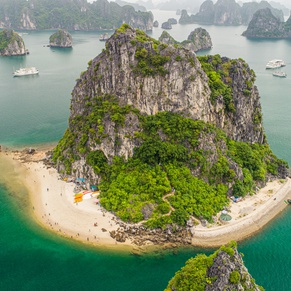 Ba Trai Dao Islet
Ba Trai Dao Islet
 Vung Duc Temples and Grottoes
Vung Duc Temples and Grottoes
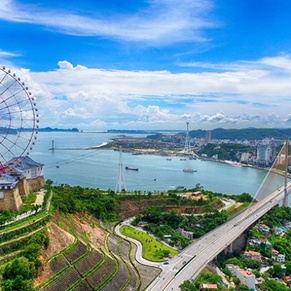 Sun World Halong Complex
Sun World Halong Complex
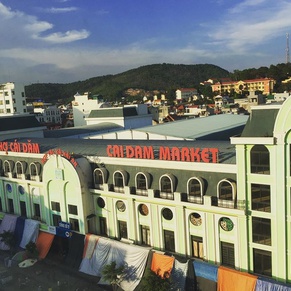 Cai Dam Market
Cai Dam Market
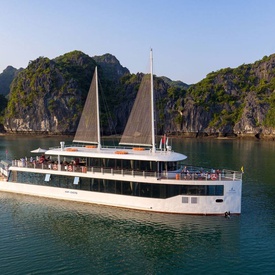

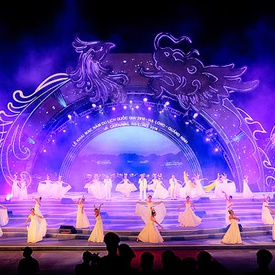
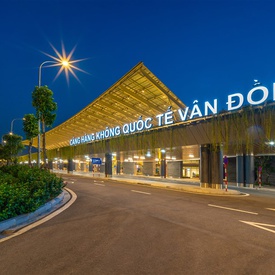
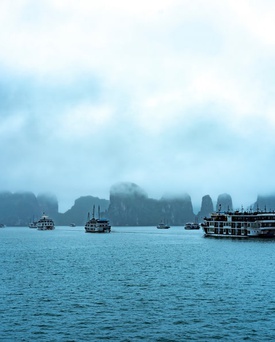 Halong Bay in January
Halong Bay in January
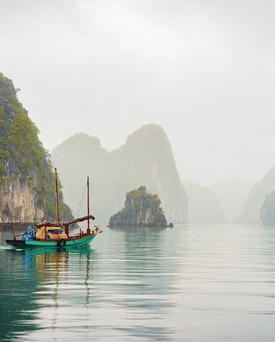 Halong Bay in February
Halong Bay in February
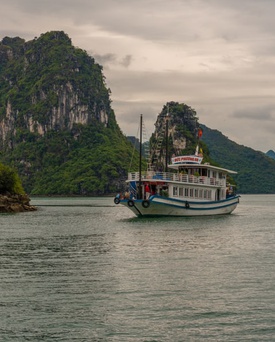 Halong Bay in March
Halong Bay in March
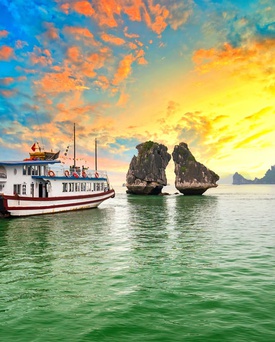 Halong Bay in April
Halong Bay in April
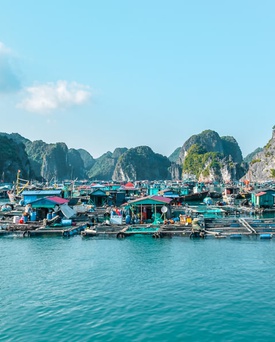 Halong Bay in May
Halong Bay in May
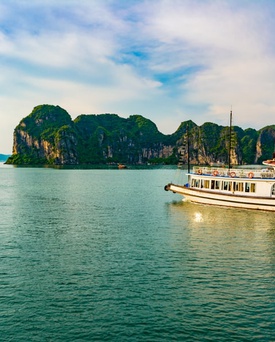 Halong Bay in June
Halong Bay in June
 Halong Bay in July
Halong Bay in July
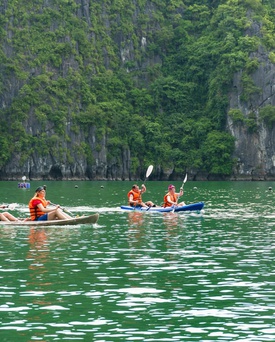 Halong Bay in August
Halong Bay in August
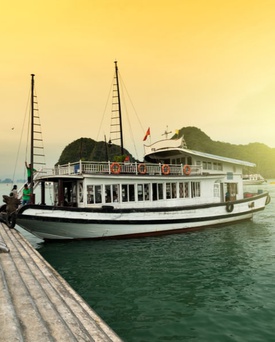 Halong Bay in September
Halong Bay in September
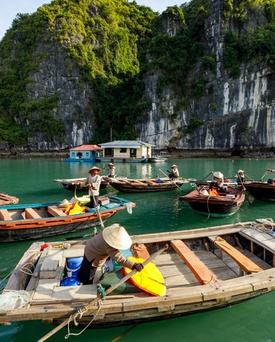 Halong Bay in October
Halong Bay in October
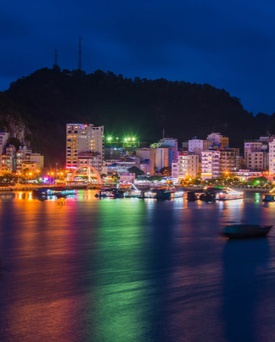 Halong Bay in November
Halong Bay in November
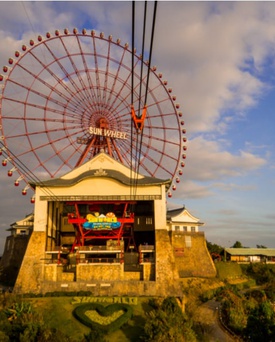 Halong Bay in December
Halong Bay in December


